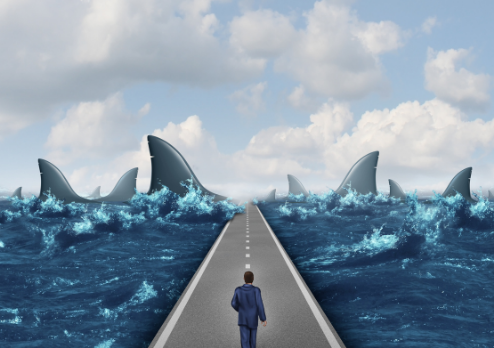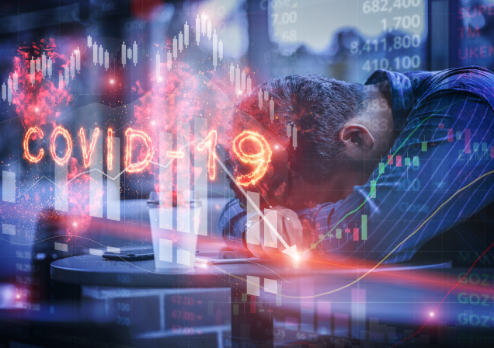
The Hypothalamus-Pituitary-Adrenal (HPA) system is a brilliant mechanism for handling acute stresses. However, this protection system was not designed to be continuously activated. In today's world, most of the stresses we are experiencing are not in the form of acute, concrete "threats" that we can easily identify, respond to and move on. We are constantly besieged by multitudes of un-resolvable worries about our personal lives, our jobs, and the pandemic stricken global community. Such worries do not threaten our immediate survival but they nevertheless can activate the HPA axis, resulting in chronically elevated stress hormones.
To illustrate the adverse effects of sustained adrenaline, let us use an example of a track race. An extremely well-trained and healthy group of sprinters step up to the starting line. When they hear the command: "On your mark!" they get on their hands and knees and adjust their feet into the starting blocks. Then the starter barks out, "Get set." The athletes' muscles tighten as they prop themselves up on their fingers and toes. When they shift into "Get set" mode, their bodies release the flight-promoting adrenaline hormones that power their muscles for the arduous task ahead. While the athletes are on hold awaiting the "Go" command, their bodies are straining in anticipation of that task. In a normal race, that strain lasts only a second or two before the starter yells, "Go!"
However, in our mythical race, the "Go" command, which would launch the athletes into action, never comes. The athletes are left in the starting blocks, their blood coursing with adrenaline, their bodies fatiguing with the strain of preparing for the race that never comes. No matter how toned their physique, within seconds, these athletes will physically collapse from the strain.
We live in A "Get set" world and an increasing body of research suggests that our hyper-vigilant lifestyle is severely impacting the health of our bodies. Our daily stressors are constantly activating the HPA axis, priming our bodies for action. Unlike competitive athletes, the stresses in our bodies are not released from the pressures generated by our chronic fears and concerns constantly leashed out by the authorities in collusion with the mainstream media. Almost every major illness that people acquire has been linked to chronic stress.
The HPA axis' effect on the cellular community mirrors the effect of stress on a human population. Picture a vibrant global community before the start of the recent pandemic. Like cells in a multi-cellular organism, the members of this society actively work at jobs that contribute to the community's growth and usually get along with each other. Factories are busy manufacturing, construction people are building new homes, grocery stores are selling food, and kids are in school learning their ABCs. The community is in a state of health and growth while its residents constructively interact toward a common goal.
Suddenly, an 8 pm announcement on the mainstream media brings a nation to standstill. Everyone stops working to run off to their homes. The harmony of the community is disrupted as individuals, acting only to support their own and their family’s survival, get locked down in their homes.
Since early 2020, the world has experienced a series of catastrophic events - international lockdowns, border closings, widespread business closures, economic collapse, and massive unemployment. This has amounted to an unprecedented curtailment of civil liberties and freedoms in the name of keeping people safe by locking them up in their homes.

The pandemic lockdown turned into a human tragedy. Wanting to go home in a crisis is natural. If students, tourists, pilgrims stranded overseas want to return, so do labourers in big cities. They also want to go home to their villages.
But what would happen if the media and the authorities go on doing this relentlessly and there is no all-clear signal to resume the normal activities? People would stay in their protective postures indefinitely. But how long can they maintain their protection posture? The community eventually collapses in the face of unemployment, economic meltdown, dwindling food supplies and a host of other factors. One by one even the strongest die because chronic stress is debilitating. A community can easily survive short-term stress, like an air raid drill, but when the stress goes on and on it results in cessation of growth and the breakdown of the community.
Fear is ultimately what strips us of our human rights and drives a society into totalitarianism. The only way to circumvent such a fate is to bravely resist it.
You must examine how your fears and the ensuing protection behaviors are impacting your life. What fears are stunting your growth? Where did these fears come from? Are they necessary? Are they real? Are they contributing to a full life? If we can control our fears, we can regain control over our lives.
It does not have to be this way. We can take control of our health. Together we can move beyond fear and doom and gloom. As renowned Indian activist Vandana Shiva explained in a recent interview, "We have to resist fear and we have to resist hate… we have to absolutely not become victims of fear mongering… we don't have the luxury to be hopeless… To be alive today means hope is something you must cultivate on a daily basis. Cultivating hope is cultivating resistance."
US President Franklin D. Roosevelt knew the destructive nature of fear. He chose his words carefully when he told the nation in the grips of the Great Depression and looming World War: "We have nothing to fear, but fear itself." Letting go of our fears is the first step toward creating a fuller, more satisfying life.